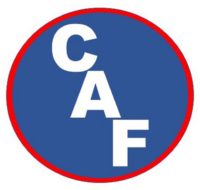How to get the best effectiveness out of your CAFS
So your department took the plunge and purchased a compressed air foam system on your new apparatus. You know CAF capabilities will enhance your operations but by how much? There are various numbers floating around out there. Two times, five times, ten times more effective than water. You will see an immediate positive effect from the first time you use your system. How large an effect depends on many factors. The biggest factor is training.
The subject of training should be on your mind as you are writing the spec for your new apparatus. Consider what instruction is included with the system. This varies widely throughout the industry. Some manufactures provide no instruction. Others provide half a day at the factory for the fire department personnel doing the final inspection or picking up the apparatus. Still others provide up to three days instruction at your fire department. Will this make a difference? Check with your manufacturer and see what is available.

Holding the class at your department has the advantage of allowing more of your personnel to participate. You may decide to use the train the trainer concept and only have your key training personnel attend the class. If so it is still advantageous to have the class at your facility. First the logistics of travel, scheduling, overtime, etc. are easier. Second you are at home where you can discuss and deal with all of the variables that make your department unique. These include call types and volumes, mutual aid companies, the foam concentrate you are using, the water supply and quality in your area, and local weather conditions to name a few.
Consider who will be doing your instruction and what qualifications they have. The person that you want teaching you CAF should have several qualifications. First they must have fire-fighting experience. Second they must have experience fighting fire with CAFS. And third they should be a qualified fire service instructor. These qualifications give the instructor credibility with your personnel. This makes the class much more effective. A qualified instructor will be able to communicate with your personnel on a user-to-user level. They can also tell you what will happen when the system is used in various situations. We have all attended a class where a salesman or a factory representative came out to teach the class. They told us turn this knob and pull that lever but had no idea why it worked, how to troubleshoot it if it didn’t work, and could not answer our “what if” questions.
The delivery instruction that you receive is extremely important. However, it is just the tip of the training iceberg that will allow the most effective use of your CAFS. Being able to run the system and get foam out of the hose line is the easy part. We have all been operating fire pumps for years. Firefighters are smart people and they will easily master the steps needed to add foam and air to the water. They will also readily understand how to change the foam consistency.

It is vitally important that your training does not end there. Your personnel must thoroughly understand what type of foam to use in various tactical situations. Should the CAF foam be wet and sloppy or thick like shaving cream? Both are tools in the toolbox and have their proper tactical application. Speaking of tools, CAFS is just that, a tool. And while it is the tool that you will use the most you should also understand when and where to use your foam proportioner and an aspirating nozzle to your tactical advantage.
As well as knowing what type of finished foam to use and when to use it you need to understand the variables. The question often arises, “How long will the foam stay after the application?” There is not a specific answer to this question. The time will vary according to how you made the foam, what you applied it on, the weather conditions, the foam concentrate used, and your water quality to name a few. As you can see some of these are specific to your location. Learning what will happen takes practice. You need to train in various conditions and become familiar with how the foam works so that whether you are fighting a fire or protecting an exposure you will be applying the right product at the right time.
Most importantly you must train with live fire. Filling the parking lot with bubbles or coating the side of the station has its place to learn what we have already discussed. Having a handle on extinguishing fire with foam only comes with hands on live fire experience. There are differences both in the application techniques and in how the fire environment changes when using CAF. You can discuss this in a classroom setting but for most firefighters, experience is believing. The best opportunity to experience CAFS is in an acquired structure where you are surrounded by Class A fuels. Knowing the logistical and safety issues that come with that type of training, the next best bet is using a burn facility. If you elect to use a burn building it must be capable of using Class A fuel. Propane fired burn-buildings will not give a real life experience with CAF. Even a burn building using Class A fuels is still a concrete or metal box. Because of this the effects of CAF will not be as great. Also most burn rooms are fairly small and easily overwhelmed with water let alone CAF so it is harder to see the effectiveness of the foam.

The bottom line is like anything else, the more you train with and use you new system the more proficient you will become. Keep in mind that there is no one right way to use CAFS. You need to find out what works best for your department and that comes with training and experience.






































